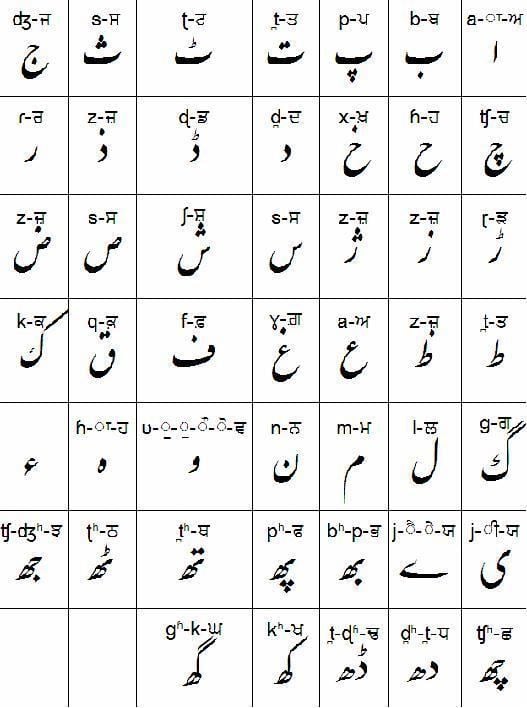 | ||
Languages PunjabiMajhi dialectHindko dialectSaraiki dialect Parent systems Proto-SinaiticPhoenicianAramaicNabataeanArabicPerso-ArabicShahmukhi Unicode range U+0600 to U+06FFU+0750 to U+077FU+FB50 to U+FDFFU+FE70 to U+FEFF | ||
Shahmukhi (Punjabi: شاہ مکھی, Gurmukhi: ਸ਼ਾਹਮੁਖੀ, meaning literally "from the King's mouth") is a Perso-Arabic alphabet used by Muslims in Punjab to write the Punjabi language. It is generally written in Nastaʿlīq calligraphic hand. Perso-Arabic is one of two scripts used for Punjabi, the other being Gurumukhi.
Contents
The Shahmukhi alphabet was first used by the Sufi poets of the Punjab; it became the conventional writing style for the Muslim populace of the Pakistani province of Punjab following the independence of Pakistan in 1947, while the largely Hindu and Sikh modern-day state of Punjab, India adopted the Gurmukhi script to record the Punjabi language.
It is used as the main alphabet to write the Pothohari dialect in Indian Jammu and Kashmir.
Shahmukhi is written from right to left, while Gurmukhi is written from left to right. Below is the comparison of the two scripts.
Features
Loanwords
In Punjabi, there are many Arabic and Persian loanwords. These words contain some sounds which were alien to South Asian languages before the influence of Arabic and Persian, and are therefore represented by introducing dots beneath specific Gurumukhi characters. Since the Gurmukhi alphabet is phonetic, any loanwords which contained pre-existing sounds were more easily transliterated without the need for characters modified with subscript dots.
ع is often transliterated in many ways due to its changing sound in various Arabic and Persian words.
